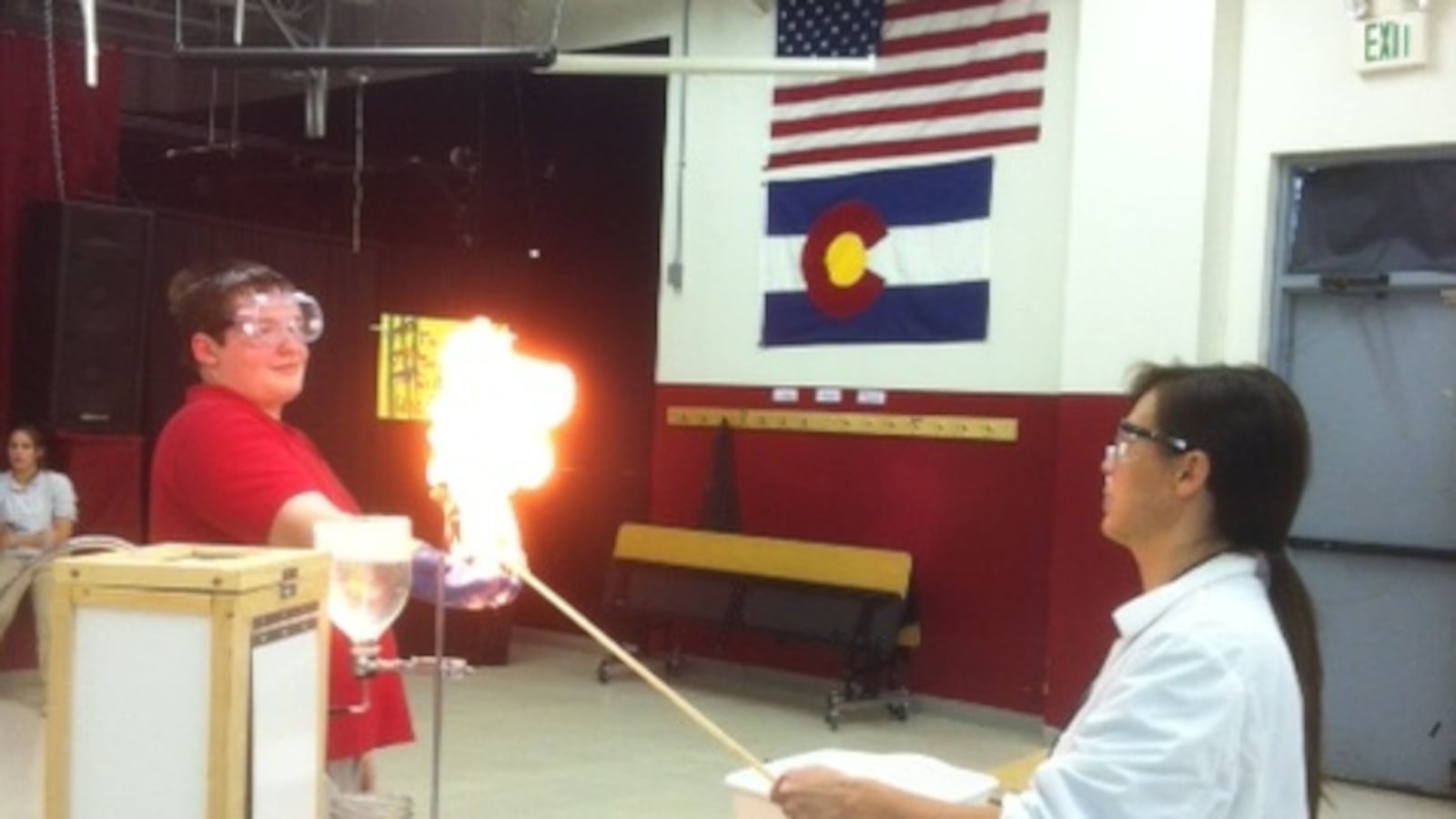Hunched-over high school students across the city will be shading in multiple-choice bubbles and dashing off essays next week as they take the state Regents exams.
But last Friday, students at City-As-School High School in Manhattan offered a very different vision of assessment.
During a student-organized conference meant to showcase the school’s instructional model, students read monologues from the point of view of Chinese immigrants, screened documentaries they had produced on gun violence and harassment, argued for changes to the city’s school-discipline policies, and described internships where they had cared for injured animals and assisted kindergarten teachers.
Such projects stand in for tests at City-As-School, which is one of more than two-dozen city high schools that have state permission to tie graduation to student work instead of Regents-exam scores.
As Mayor de Blasio promises a school system that relies less on standardized tests and more on portfolio-style assessments, students and staff at City-As-School suggested Friday that their school could serve as a model. At the same time, the school’s experience may hint at some of the difficulties of moving away from traditional tests.
“I feel like now is our moment, because there is so much dissatisfaction about standardized testing,” said John Antush, who teaches a class called “Economics and Education.” “I think the world is on our side.”
City-As-School, a four-decade-old public school for older students who transferred out of other high schools, is a member of the New York Performance Standards Consortium. The consortium is a longstanding coalition of 28 high schools (all but two are in the city) with state waivers that allow their students to complete intensive projects rather than take the Regents exams (except for English, which they still must pass).
The consortium enjoys the backing of the city’s teachers union and education department, which has lobbied the state to let 22 additional city schools that have been trained in the consortium’s assessment model also skip the Regents tests.
While de Blasio hasn’t explicitly cited the consortium model, he too has called for more schools to use student-work portfolios to assess student learning.
Students in Antush’s economics class, who organized Friday’s event, said de Blasio should apply elements of their school’s model, which they call “performance-based education,” throughout the school system. They made petitions to that effect, which they plan to deliver to City Hall.
Classes at the City-As-School are ungraded. Instead, if students meet the class requirements and complete a culminating project, they earn credit.
To graduate, they must earn 40 class credits, pass the English Regents exam, and complete a portfolio. The portfolio includes an internship report that involved research, a literary essay, science experiment, math project, career plan, and a college application.
When students choose to include projects in their graduation portfolios, they must defend them before evaluation panels that can include teachers from other consortium schools. The projects are evaluated according to rubrics used by the entire consortium.
Alexandra Garcia, 18, transferred to City-As-School in September from Brooklyn Technical High School, where she said she struggled to keep up with the heavy workload. She said that while City-As-School is “not as hard” overall, the portfolios can be more demanding than traditional tests.
“I think it’s actually a little harder to stand in front of a group of people and talk about what you wrote and know it well enough to prove your point,” she said. “You can’t just guess.”
Because teachers are freed from having to cover all the material that might appear on the state exams, they can design courses that explore particular topics in depth, such as transcendentalism or immigration, students and staff said.
The school’s defining feature — and the source of its name — is its focus on real-world learning. Students spend up to 20 hours and two to three days per week interning at about 300 different sites, according to Principal Alan Cheng.
Those sites range from bakeries and flower shops to museums, law offices, and hospitals. Unlike at most high schools, students earn academic credit for the unpaid internships if they complete all the requirements, including the final reports.
“You learn so much hands-on that you take back with you,” said Jennifer Matos, 17, who interned at a wildlife rehabilitation center. “If you’re learning in a school environment, just learning definitions, you don’t remember that.”
But if City-As-School reveals the benefits of a hands-on, mostly test-free model of learning, it suggests some of the challenges as well.
First, the amount of academic content students glean from their internships — which they describe in reports that can go in their graduation portfolios — seems to vary widely according to the sites they choose.
Also, the school’s deep-dive classes miss out on some of the breadth of material covered by classes subject to the state tests.
And while students’ graduation portfolio work is judged by panels using the consortium-wide rubrics, they may still enjoy some flexibility in grading not afforded to students who must pass the state’s standardized tests.
“It is somewhat subjective,” Antush said about the school’s grading system.
While City-As-School’s experiential learning model has attracted the interest of other districts, the school earned a C on its most recent progress report and an F in the section that factors in credit accumulation, attendance trends, and scores on the English Regents exam.
Cheng said a recent quality review of the school, which commends its environment and leadership, offers a fuller picture of the school. But the staff is also “actively working to make improvements” in the areas cited by the progress report, he said.
He also said City-As-School graduates who go to college tend to remain enrolled at higher rate than graduates of other transfer schools — mirroring higher-than-average college persistence rates for consortium graduates as a whole.
Cheng said those rates stem from the consortium’s teaching and assessment model.
“It certainly is a higher standard,” he said, which, “more closely replicates the kind of skills students will need once they leave high school.”


